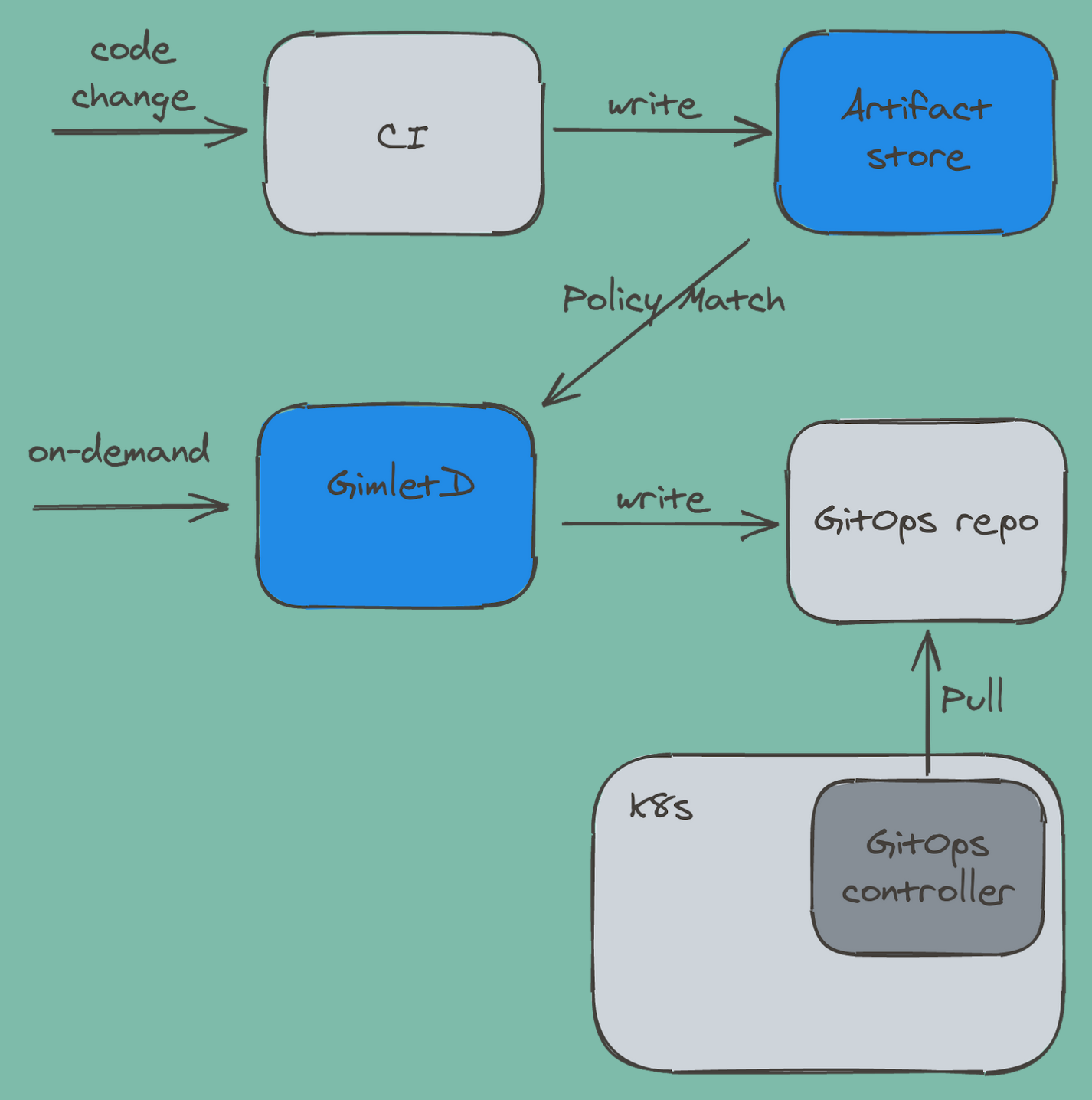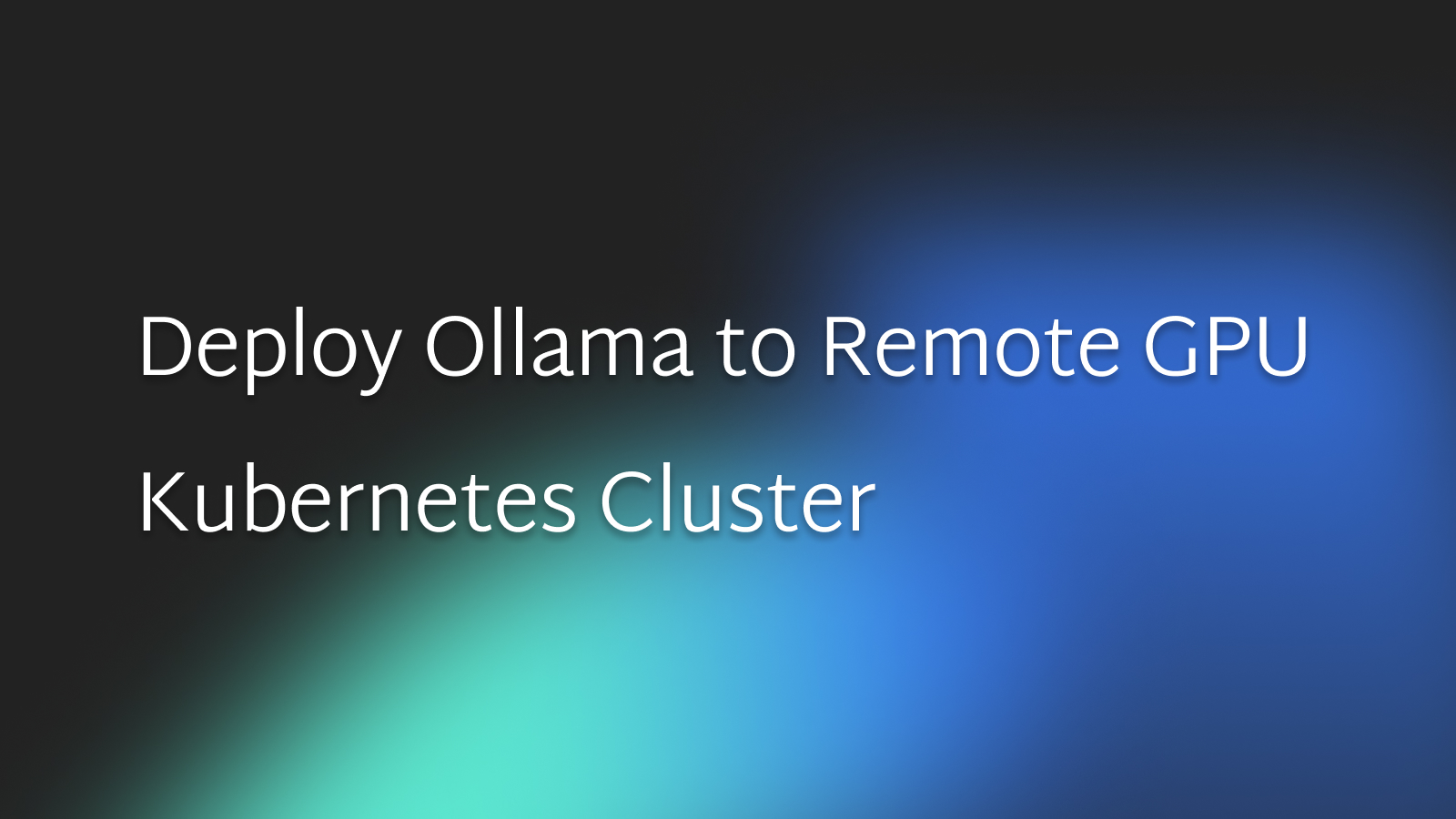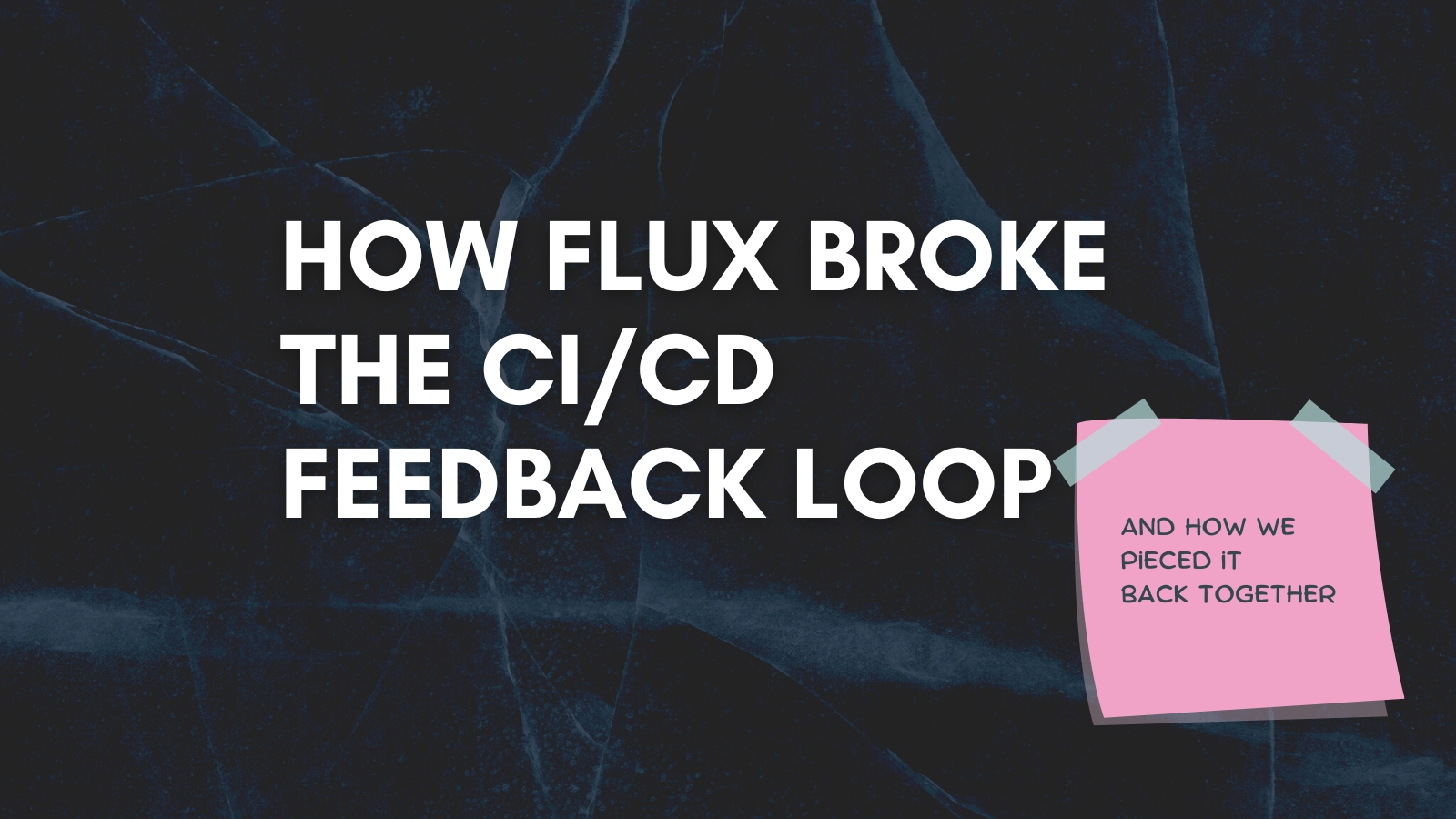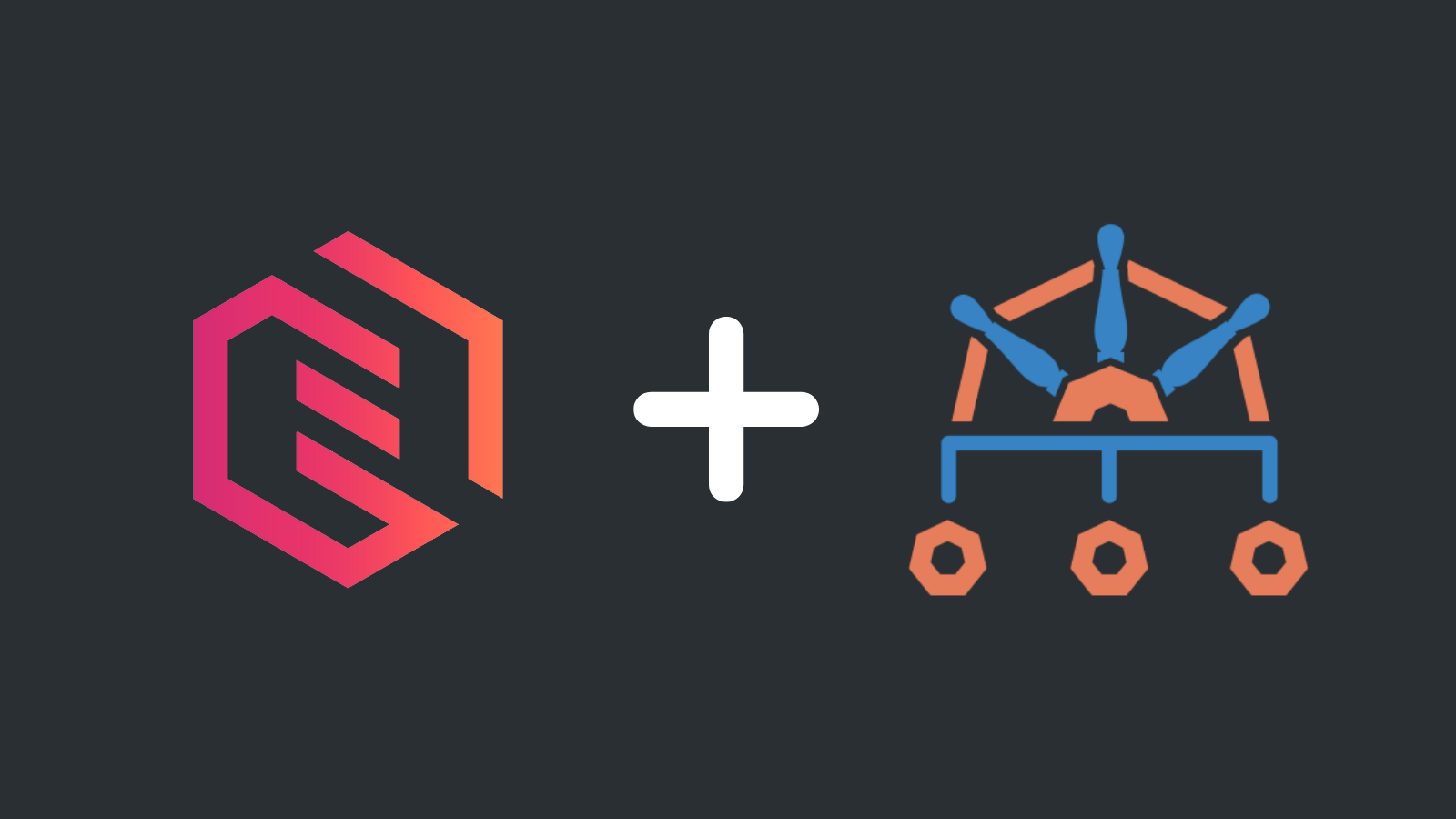Announcing GimletD, the gitops release manager

Laszlo Fogas

Today, I am thrilled to announce GimletD, the gitops release manager component of Gimlet.
A little more than two months ago I launched Gimlet CLI to bring conventions to the gitops repository, and a CLI to operate within those conventions.
Gimlet CLI enjoyed a decent industry buzz since its launch. Concepts that it introduced - OneChart, and the Gimlet manifest - sparked some interest in industry collaboration which warns my heart very much.
Especially, because even then I knew that GimletD is not long before it gets released, and it is also built around those concepts.
GimletD builds on the workflow that Gimlet CLI introduced and extends it with a centralized approach for managing releases
First, let's see how the workflow looks with Gimlet CLI and what GimletD brings to the table.
You put the Gimlet environment manifest file in your application source code repository.
This declaratively captures all there is to be captured about an application environment, be that staging, production or a throw away environment.
# .gimlet/staging.yaml
app: myapp
env: staging
namespace: my-team
chart:
repository: https://chart.onechart.dev
name: onechart
version: 0.15.3
values:
replicas: 1
image:
repository: myapp
tag: '{{ .GIT_SHA }}'
ingress:
host: myapp.staging.mycompany.com
tlsEnabled: true
Then you use Gimlet CLI's gimlet manifest template command to render the specified Helm chart:
- either locally to debug your manifest
- or on CI you pipe it into
gimlet gitops writeto update your gitops repository - or on CI you pipe it to
kubectl applyif you don't fancy gitops too much
While we are soon providing plugins to all major CI engines - so that you write fewer scripts - you are still wiring everything together in CI pipelines.
To move much of the CD logic out of your burgeoning CI pipelines, we are launching GimletD to pack all release automation logic in a standardized toolchain.
This will not just reduce the size of your CI pipelines, but also allow for centralized control.
GimletD allows for centralized control over releases, and flexibility to add new deployment features to all applications at once
GimletD is a server-side component. It listens for new releasable software versions and matches them against the existing deployment policies.
You can set the deployment policies trough the now extended manifest file:
# .gimlet/staging.yaml
app: myapp
env: staging
namespace: my-team
+deploy:
+ branch: main
+ event: push
chart:
repository: https://chart.onechart.dev
name: onechart
version: 0.15.3
values:
replicas: 1
image:
repository: myapp
tag: "{{ .GIT_SHA }}"
ingress:
host: myapp.staging.mycompany.com
tlsEnabled: true
When a new software version matches this policy, GimletD will render the manifest and write it to the gitops repository. Just like you did so in CI with gimelt manifest template and gimlet gitops write.
There is only one missing piece to make this possible.
Introducing the release artifact to detach the release workflow from CI
With GimletD, CI pipelines create an artifact for every releasable version of the application, but not release them.
GimletD then serves as a release manager to perform ad-hoc or policy based releases.
The artifact itself is a json structure that you can create with our CI plugins, or with Gimlet CLI's gimlet artifact * commands.

Ad-hoc releases, rollbacks and other actions
You can read more about the concepts of GimletD or follow how to perform ad-hoc releases and rollbacks in the GimletD documentation.



